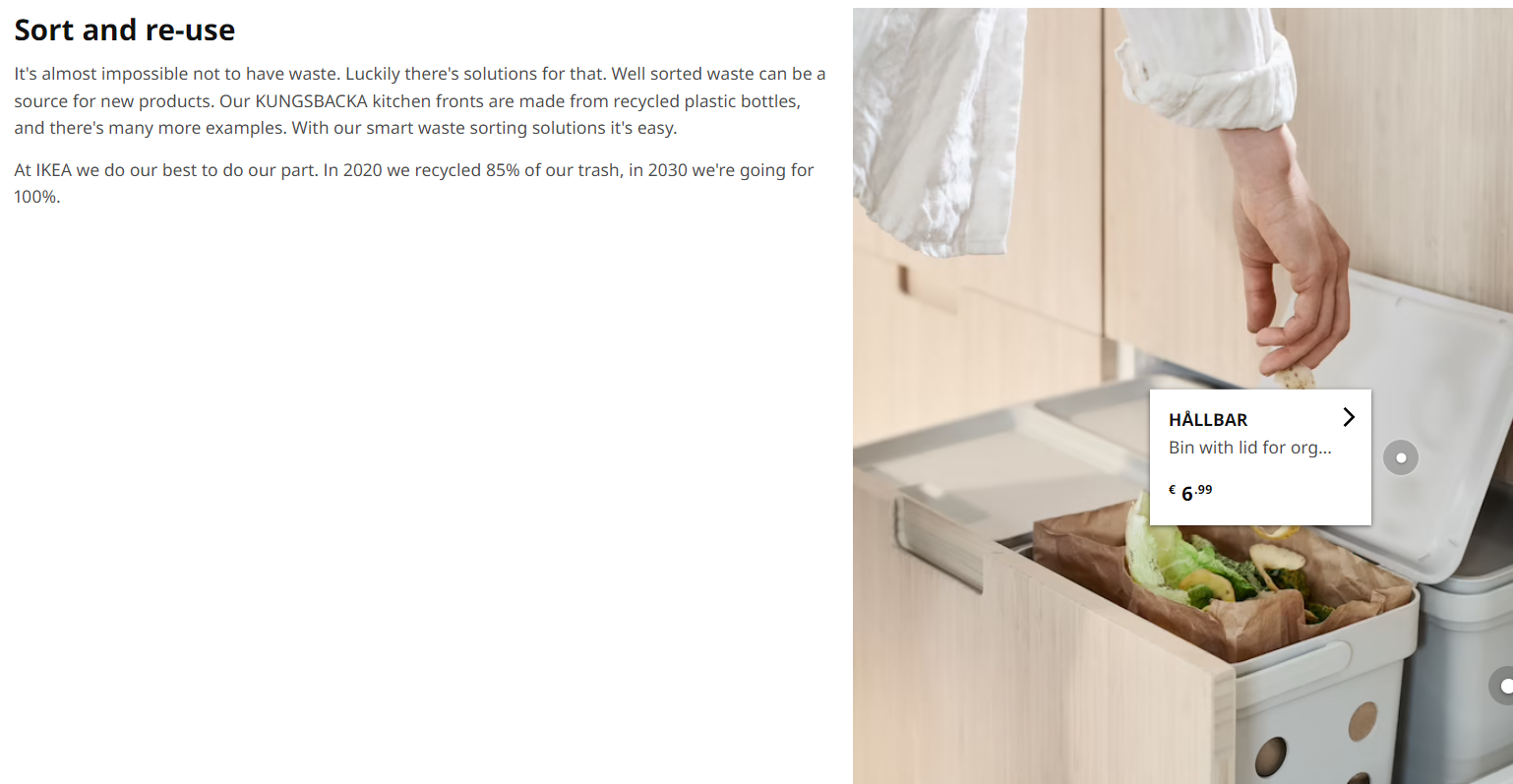content

“Please, sell me…” is probably the most popular phrase used by recruiters during an interview for the position of a salesperson. Regardless of the object of the task – it may be a pen that was at hand, a product made up on the spot, or an ultra-expensive car from the latest catalogue – the ability to convince another person that an item you offer is exactly what they need may prove to be useful here.
You can pass this test by using one of the most effective sales methods, which is talking to customers in their own language – the language of benefits. What is it exactly and what can you achieve by using it? How to use it correctly in the e-commerce industry? We are here to provide answers to all these questions!
Language of benefits – what is it?
The good news is that you don’t have to sacrifice several years of your life to learn how to speak the language of benefits fluently. The most important thing to understand is that the consumer always comes first, not a product or service. After all, this extremely effective sales technique relies on a concise presentation of features and advantages of a given item and then – on a smooth transition to the personal benefits a customer can get from using it. No one shops without a reason – more often than not it is simply about satisfying some needs. But which ones specifically?
The language of benefits and the sales persona
Before we start raving about the products we offer, we should create a more or less accurate buyer persona profile . Thanks to that, we will find it easier to identify the potential needs of our recipients and, consequently, to write an appropriate sales text. What-ifs and theories about what a given customer is like will not work here – the best solution is to always rely on actual data.
In order to get to know people that are interested in our products or services better, we can use generally accessible tools . They will allow us not only to rule out people to whom the products we offer definitely will not appeal, but also to create the right sales persona. Thanks to statistics related to e.g. the age, gender, or interests of consumers , we will be able to determine the basic socio-demographic criteria, based on which creating specific content will prove to be the most profitable.
Having decided at whom we want to target our message, we can address consumers’ biggest pain points. To identify them, we can use e.g. the Google Trends service, which shows phrases that Internet users search for the most often. Long story short – the more we know about our customers, the easier it is to connect with them and increase sales.
The language of benefits in sales
Every e-seller knows that product description plays a big part in e-commerce. It tells the customer what exactly the subject of the transaction is, what it can be used for, and what makes it “special” (i.e. “better than the rest”). If we make use of the SEO potential and include the most popular keywords, we will further improve the positioning of the article or the store itself in search results – you can read more about it in our article “How to increase sales on Amazon”.
Product descriptions offer a whole range of possibilities both to sellers and to experienced copywriters who are aware of the fact that there is a difference between a “unique formula,” “unique formula enriched with AHA acids,” and “unique formula enriched with AHA acids thanks to which you will gain an even skin tone” – and not a small one.
People responsible for creating content in the language of benefits typically rely on the popular scheme: FEATURE ➜ ADVANTAGE ➜ BENEFIT. How does it look in practice?
Product features are, obviously, product characteristics:
- A vertical mouse.
- A waterproof smartwatch.
Advantages present the practical use of the previously mentioned features:
- A vertical ergonomic mouse.
- A waterproof smartwatch perfect for the pool.
Benefits, in turn, illustrate what customers themselves may gain by buying a given product:
- A vertical ergonomic mouse brings relief to your wrist. It doesn’t force an unnatural position of the hand and, even if used for a long time, it ensures comfort when working on a computer. Its interesting design will appeal to all fans of modern gadgets.
- A waterproof smartwatch perfect for the pool – you don’t have to take it off before jumping into the water, so there is no need to stop tracking your physical activities. You don’t have to worry that its screen will get flooded or that its key functions will stop working – the unique Waterproof X5000TM technology guarantees that the watch will withstand even the longest trainings in the water.
The language of benefits – examples
Let’s take a look at real-life examples of using the language of benefits in descriptions of three products: shoes, a polaroid camera, and a trash can.

Source: www.office.co.uk
FEATURE: chunky, stylish, daring ➜ADVANTAGE: extra room, decorative shoelace, and plush collar ➜BENEFIT: they provide support that lasts all day long. The language of benefits used in this short description stimulates the customer’s imagination and promises to satisfy their needs and desires – in this case, comfortable and aesthetic shoes.

Source: www.bestbuy.com
The description of this product is not targeted towards photography enthusiasts that are mainly interested in the technical data of a device. This particular camera enables “capturing great images on-the-go” – such benefits are supposed to appeal to people whose adventure with photography has only just begun and who are looking for an easy-to-use device. The description tells the consumers that this product is so handy that you can take it anywhere, even underwater; therefore, you are able to capture all the most important or beautiful moments. What more could you ask for?

Source: www.ikea.com
The description of these trash cans focuses on only one feature that proves their uniqueness – they are made from recycled plastic bottles. Apart from that, there are no benefits or advantages mentioned to encourage people to buy this product. The minimalistic design and – above all – the affordable price of the product are meant to speak for themselves. But in case that’s not enough, the copywriter creating content for the IKEA website explains why it is best to invest in cans offered by the Scandinavian producer: by buying them, you contribute to reducing waste and protecting the environment.
FOMO marketing
An equally effective selling technique is the so-called FOMO marketing, also known as the language of loss. Similar to the language of benefits, it impacts the customer’s emotions; however, it does not paint a vision of a better life. Instead, it instils fear in the customer that they will lose out on something.
The language of loss is most often used in time-limited offers that are intended to encourage the customer to make the purchase right now, in this moment, otherwise the opportunity (i.e. low price) will be gone forever! This technique has been mastered to perfection by two industries – the aviation industry and the hotel industry.

Source: https://www.lot.com/pl/en

Source: https://www.agoda.com/
When this technique is used, customers are “threatened” that if they won’t immediately book their flight with this or that airline or stay at this or that hotel, they will miss out on a very good offer and a big discount. The “last booked 2 hours ago” part underlines the offer’s popularity and increases the sense of competition with other consumers.
Language of benefits and FOMO marketing – a perfect duo
Some people assume that the language of benefits cannot be used simultaneously with the language of loss and vice versa. Nothing could be further from the truth! Combining both sales techniques and balancing them appropriately produces the most spectacular results.
While creating marketing content, we should keep in mind that each customer is different. No matter how hard we try, we will never be able to please everyone; therefore, it is worth finding out who might be interested in our products and then, based on the gathered data, choose the most suitable sales technique.

If you don’t know how to create your selling persona profile, you can always delegate this task to professionals. By using the most popular tools in the SEO industry, we will help you reach more customers, optimise your content, and increase sales.


